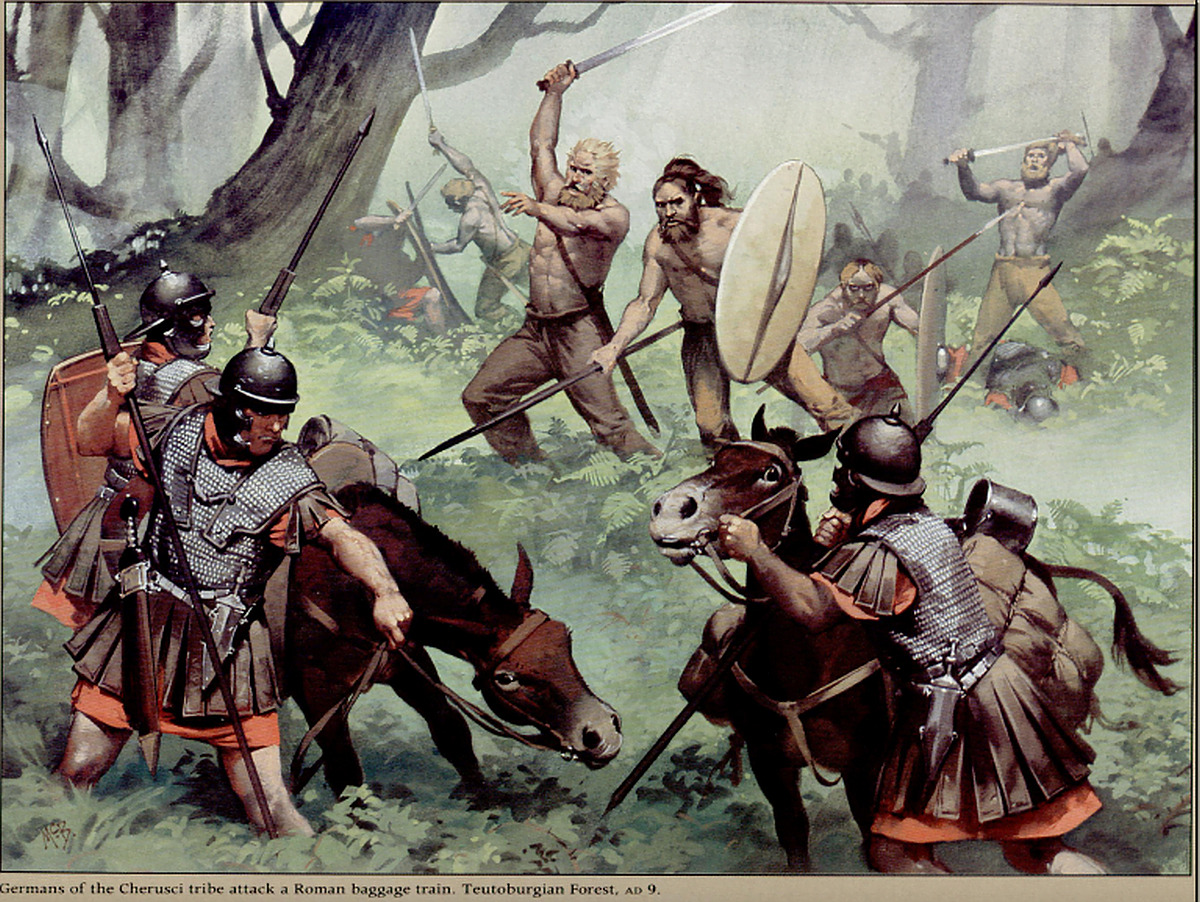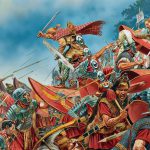After the tragic defeat in the Teutoburg Forest in 9 CE, Augustus sent Tiberius to the Rhine to calm and secure the border. At that time, however, no major operations were planned against the rebellious Germanic tribes.
The Romans, however, did not want to let the fallen soldiers be left without a proper burial, and the legionary eagles remained in the hands of the Germans. To this end, at the end of 14 CE, Germanicus, the adopted son of Tiberius, set out on a campaign, which was described almost a century later by Tacitus in “Annales”. Interestingly, for the sake of the plot and to reflect the path that Varus travelled in 9 CE, Germanicus’ marching troops were moving from east to west, when in fact it was impossible at the time and the direction of the expedition was in the opposite direction.
Tacitus makes it clear that the purpose of the Germanicus expedition was not the expansion of Rome, but the revenge of the Roman Empire for its defeat. Germanicus inflicted numerous defeats on Arminius, but what is extremely interesting is the view that Roman soldiers were supposed to see in the place where Varus’ legions fought.
Tacitus emphasizes how hideous a sight for the legionaries was: the numerous swamps and dense forests as well as the remains of Arminius’ traps and blockades. Germanicus’ troops reached the first Varus camp, which indicated that it was formed by three legions, but units were already decimated. In the middle of the plain, near the camp, numerous bones of fleeing or defending soldiers and horses were found, as well as their preserved weapons. There were skulls and limbs of people and animals nailed to the trees. Remnants of sacrificed officers (tribunes or centurions) were still visible in the nearby woods.
As Tacitus reports, Germanicus’ troops were accompanied by surviving witnesses of the massacre from 9 CE, who showed him the place where Varus (in the second Roman camp) was killed from his own hand, where gallows for the Romans were prepared, and where Arminius spoke to his victorious troops. Then the Roman legionaries of Germanicus began to bury the surviving remains of his comrades in arms; Germanicus himself started this process, for what Tiberius later criticized him, believing that the commander should not undertake such tasks.
During the expedition, two legionary eagles were recovered in the years 15-16 CE. The third standard was regained in 41 CE by Publius Gabinius.
After two years of fighting in Germania, in 17 CE, Germanicus had his triumph in Rome for his victories; in the procession he led, among others the wife of Arminius – Thusnelda and their son. Despite the victories and defeat of Arminius, Tiberius decided not to annex Germania the Great (Germania Magna), judging that the benefits of conquering it were disproportionate to the costs and conditions in which the Romans would live (numerous swamps and forests). The border of the Empire in this region finally leapt against the wide waters of the Rhine.
Germanicus’ expedition was primarily intended to soothe wounds and trauma that were still fresh among the Romans. Despite his defeat, Arminius still held a high position among the Germanic tribes. Ultimately, however, his great power disturbed the tribal aristocracy so much that in 21 CE Arminius was murdered.









